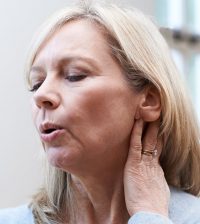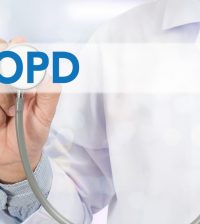- For Some, ‘Tis the Season for Loneliness. Experts Offer Tips to Stay Connected
- Taking a GLP-1 Medication? Here’s Tips to Holiday Eating
- Bird Flu Virus in Canadian Teen Shows Mutations That Could Help It Spread Among Humans
- Flu, COVID Vaccination Rates Remain Low as Winter Nears
- ’10 Americas:’ Health Disparities Mean Life Expectancy Varies Across U.S.
- Short-Term Hormone Therapy for Menopause Won’t Harm Women’s Brains
- Could a Vitamin Be Effective Treatment for COPD?
- Woman Receives World’s First Robotic Double-Lung Transplant
- Flavored Vapes Behind Big Surge in U.S. E-Cigarette Sales
- Reading Beyond Headline Rare For Most on Social Media, Study Finds
Your Income Might Influence Your Risk for Certain Cancers


Some cancers in the United States are tied to poverty, while others are more common among the wealthy, researchers report.
In the poorest areas of the country, the incidence of cancer is generally lower than in richer regions, but deaths from cancers are higher, the study authors said.
“Socioeconomic status is not something that appears on a medical record, so it is not really part of national cancer statistics, and this has skewed our thinking about cancer risk,” said study co-author Kevin Henry, an assistant professor of epidemiology at Rutgers School of Public Health in New Jersey.
Greater access to screening among the rich, and risky behaviors more common among the poor — such as smoking — may help explain the disparities, experts said.
Kaposi sarcoma (a skin cancer common among AIDS patients) and cancers of the larynx, cervix, penis and liver occur more often in the poorest neighborhoods, the investigators found.
Poorer areas also had higher rates of cancers related to drinking, smoking and using injectable drugs. These are considered modifiable risk factors for cancer.
Since smoking rates are higher in poor areas, so is the incidence of smoking-related cancers, said Dr. Ahmedin Jemal, vice president for surveillance research at the American Cancer Society.
Cancers tied to sexually transmitted disease and poor diet were also more likely in the poorest neighborhoods.
In the wealthiest areas, thyroid and testicular cancer, melanoma and other skin cancers were more common, according to the report, published online May 27 in Cancer.
For their study, the researchers used the poverty rate of the patients’ neighborhoods — based on U.S. Census information — as a measure of socioeconomic status in 16 states and Los Angeles County.
“We had data for almost 3 million cancer diagnoses in an area covering 42 percent of the United States population,” Henry said. “This allowed us to look at some rare cancers that are less often studied. Overall, the breadth and depth of our analysis is unprecedented.”
Although the researchers found scant association between poverty and cancers in general, for 32 of 39 cancers there was a significant link with economic status. Fourteen cancers were more common in poor areas and 18 were less common.
“Rates of cancers associated with overdiagnosis — that is, cancers detected due to use of medical technology that would not have been identified otherwise — tend to increase with increasing affluence,” said study co-author Recinda Sherman, a program manager in data use and research at the North American Association of Central Cancer Registries.
Conversely, cancers common in poor areas are often the result of lack of access to cancer screening, said Jemal, of the cancer society. Cervical cancer is one example, he noted.
Another example is Kaposi sarcoma. “Kaposi sarcoma is an HIV-related cancer, and HIV patients are likely to be poorer,” he said.
Diagnoses of breast and prostate cancer are more common in richer areas because of greater access to screening such as mammography, Jemal said.
Screening identifies these cancers early when they can be treated. This helps explain why poor people are more often diagnosed with advanced cancer and are more likely to die from these cancers, Jemal said.
These disparities, Jemal added, can be reduced only by targeting poor neighborhoods with messages about living a healthy lifestyle. This means stressing the importance of good nutrition, physical activity, maintaining a normal weight and not smoking, he said.
More information
For more about cancer and poverty, visit the American Cancer Society.
Source: HealthDay
Copyright © 2024 HealthDay. All rights reserved.



-120x134.jpg)





